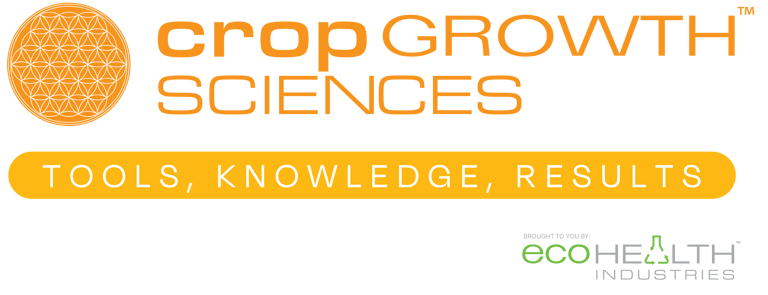Evolution of Agricultural Practices: Liebig vs. Howard | Defining Eco Health Industries
ABOUT


It Doesn't Have to be Either Or...
Agricultural practices have undergone significant transformations over the past two centuries, influenced by various scientific theories and philosophies. Two pivotal figures in this evolution are Justus Freiherr von Liebig and Sir Albert Howard. Liebig's chemical approach laid the foundation for modern agronomy, while Howard's holistic perspective paved the way for regenerative agriculture. This article explores their contributions, critiques, and the relevance of their theories in light of contemporary evidence on soil health and agricultural sustainability. Additionally, we delve into how Eco Health Industries integrates the best aspects of both approaches with their innovative products and services.
Justus Freiherr von Liebig: The Chemist's Approach
Contributions
Justus Freiherr von Liebig, a 19th-century German chemist, is often credited with founding agricultural chemistry. His work emphasized the importance of chemical nutrients in plant growth, particularly nitrogen, phosphorus, and potassium (NPK). Liebig's Law of the Minimum stated that plant growth is dictated by the scarcest nutrient resource, rather than the total amount of resources available.
Liebig's approach revolutionized agriculture by introducing the concept of synthetic fertilizers, which significantly boosted crop yields, saving millions of human lives. This chemical-centric methodology became the cornerstone of industrial agriculture, supporting the Green Revolution and enabling large-scale food production to meet growing global demands.
Critiques and Limitations
While Liebig's contributions were groundbreaking, his approach had notable drawbacks:
Reductionist Approach: Liebig's focus on NPK fertilizers led to a simplified view of soil fertility, overlooking the complexity of soil ecosystems and the importance of micronutrients, organic matter, and microbial activity.
Environmental Degradation: The widespread use of synthetic fertilizers has led to significant environmental issues, including nutrient runoff and water pollution, contributing to eutrophication and dead zones in aquatic ecosystems. Additionally, the production and application of these fertilizers contribute to greenhouse gas emissions.
Soil Health Decline: Long-term reliance on synthetic fertilizers can deplete soil organic matter, degrade soil structure, and create nutrient imbalances, leading to reduced soil fertility over time.
Economic Costs and Dependency: Synthetic fertilizers can be costly, and their continuous use fosters dependency. Over time, soils can become less fertile naturally, requiring ever-increasing amounts of fertilizers to maintain yields.
Sir Albert Howard: Pioneer of Organic and Regenerative Agriculture
Contributions
Sir Albert Howard, a British botanist, is widely regarded as the father of modern organic farming. In the early 20th century, Howard advocated for a holistic approach to agriculture, emphasizing the importance of maintaining soil health through natural processes. He promoted the use of compost, crop rotations, and green manures to enhance soil fertility and resilience.
Howard's principles laid the foundation for regenerative agriculture, a system that focuses on restoring and maintaining healthy ecosystems through sustainable practices. His work highlighted the interconnectedness of soil health, plant health, and human health, advocating for agricultural systems that mimic natural ecological processes.
Critiques and Limitations
Despite its merits, Howard's approach has faced criticism and challenges:
Yield Gaps: Organic and regenerative farming methods often result in lower yields compared to conventional chemical-based agriculture. This yield gap raises concerns about the ability of organic farming to meet global food demands.
Labor and Knowledge Intensive: Regenerative practices are often more labour and knowledge-intensive, requiring a deep understanding of ecological principles and more hands-on management, which can be a barrier to large-scale adoption.
Economic Viability: Organic farming can involve higher production costs due to increased labour, the need for organic amendments, and potentially lower yields, impacting profitability. Certification and market access can also be challenging.
Limited Access to Inputs: In regions with limited organic matter sources, farmers may struggle to produce sufficient compost or green manures, affecting soil fertility management.
Climate and Soil Variability: Organic practices can be sensitive to local climate and soil conditions, with variable effectiveness based on these factors.
Modern Evidence for Balancing Chemical and Regenerative Approaches
Contemporary research provides valuable insights into the strengths and weaknesses of both approaches, suggesting a balanced integration of their principles.
Soil Degradation from Chemical Agriculture
Modern studies confirm the negative impacts of long-term chemical fertilizer use on soil health, highlighting the need for sustainable nutrient management practices that enhance, rather than degrade, soil health.
Reduced Yields of Organic Agriculture
Advancements in organic farming techniques, such as precision agriculture and improved crop varieties, are narrowing the yield gap. However, a purely biological approach is dependent on microbial life's effective conditions to synthesize nutrients into the soil solution. Therefore, productivity can dip on the shoulders of those conditions. Regenerative practices offer additional benefits, including improved water & nutrient use efficiency and resilience to climate change.
Integrating the Best of Both Worlds
Eco Health Industries exemplifies a balanced approach to modern agriculture by integrating the strengths of both Liebig's and Howard's philosophies. Their innovative products and practices, based on "The Biological Method," combine the precision and efficiency of modern green chemistry with the sustainability and holistic principles of organic farming.
The Biological Method
Eco Health Industries' Biological Method embraces both organic wisdom and modern green chemistry, aiming to build safe, efficient plant nutrition products and soil additives. This method focuses on:
Microbial and Soil Health: Utilizing soil probiotics and prebiotics to enhance microbial diversity and soil structure, improving nutrient availability and disease suppression.
Targeted Nutrient Management: Integrating organic amendments with synthetic fertilizers to optimize nutrient supply, ensuring crops receive the necessary nutrients at the right times.
Sustainable Practices: Promoting cover cropping, reduced tillage, and crop rotations to maintain soil health and reduce dependency on chemical inputs.
Bridging the Nutrient Gap: A Financial Analogy
Using organic and synthetic fertilizers can be likened to managing finances through a checking account and a savings account:
Organic Fertilizers: The Savings Account:
Slow and Steady: Organic fertilizers release nutrients gradually, building up soil health and fertility over time, akin to accruing interest in a savings account.
Synthetic Fertilizers: The Checking Account:
Immediate Availability: Synthetic fertilizers provide readily available nutrients to meet immediate crop needs, similar to the quick access to funds in a checking account.
The contributions of Justus Freiherr von Liebig and Sir Albert Howard to modern agronomy and agriculture are profound and enduring. Liebig's emphasis on chemical nutrients revolutionized food production but led to soil degradation and environmental challenges. In contrast, Howard's holistic approach promoted soil health and ecological balance but faced challenges in terms of yield and scalability.
Eco Health Industries offers a balanced approach, integrating the strengths of both organic and synthetic fertilizers through their Biological Method. This approach optimizes productivity while maintaining soil health, supporting both immediate agricultural needs and long-term sustainability. By learning from both the strengths and limitations of Liebig's and Howard's work, contemporary agriculture can move towards more sustainable and resilient farming systems.




